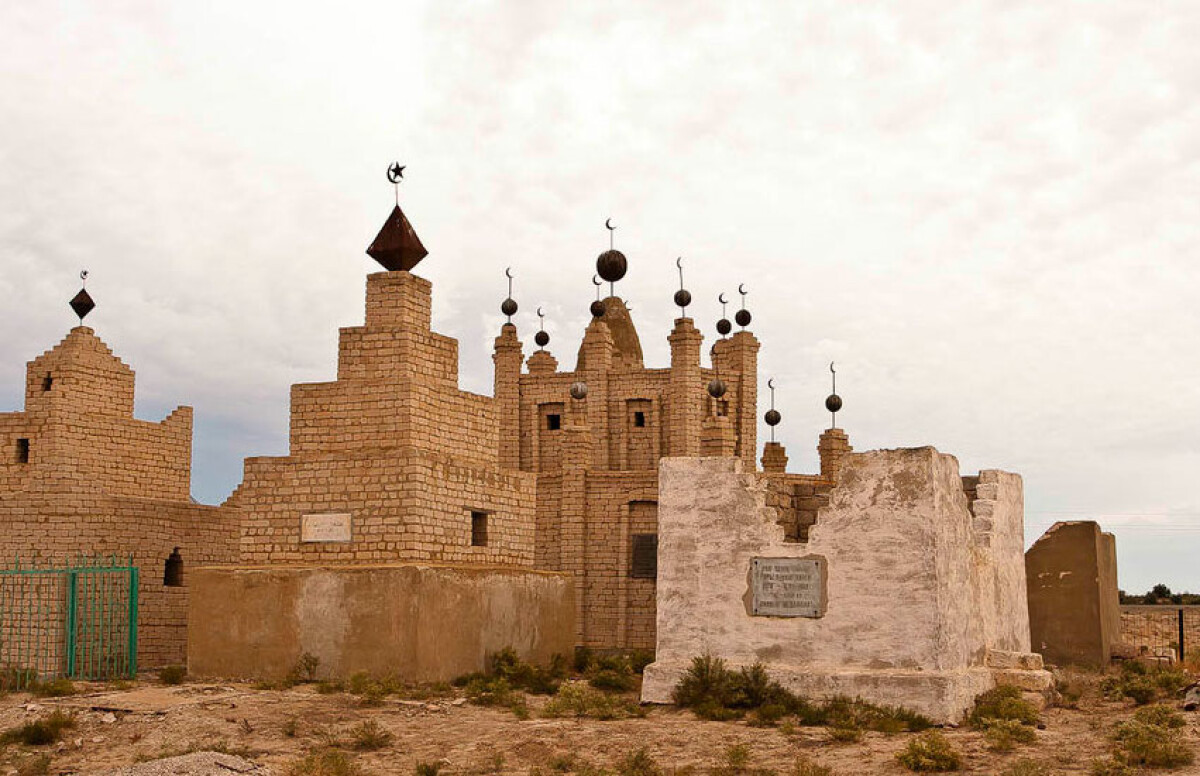
The ablution was done behind the curtain — shymyldak.
For that purpose they used tabyt that was put on two supports and was covered with straw.
In the ritual of ablution participated five-seven people — the closest relatives of the deceased and by one representative from all the family groups. Usually men were preparing the dead man and women helped with the woman. Young people were not allowed to do that, as it was thought that they might hasten their own death. A son or a daughter should never have washed their mother or father.
Boys of the age up to twelve (the age when boys were considered innocent and pure) were washed off by an old woman; children were usually washed by one woman, mainly an old woman. During the ablution a relative of the dead poured water on the body from head to foot, the rest of participants of the ritual standing on each side of the dead with their hands wrapped with white cloth were wiping the body. First they washed head, mouth, nose, right wrist of the hand, then left wrist, right foot, left foot, right shoulder-blade, left shoulder-blade, the whole body. The pieces of cloth or special sack-mittens for washing were buried near the grave, as they were considered ritually impure, and were possible objects of magic infliction of harm from the part of the dead. The ablution was finished when the relative of the dead who poured the water reckoned the body was ritually clean.
After the relative of the deceased gave sign the participants of the washing started dressing the body into akyret, which mullah cut out himself out of white cloth. In this case mullah executed the duty that was not peculiar to the clergyman of Islam. Usually akyret was prepared by the relatives. A man’s akyret was cut out the following way: rectangular piece of cloth must be in line with the length of the interval from shoulders till the knees of the corpse. On the bend of the cloth and in the middle of the upper fabric they made T-shaped cut for the head. That part of akyret — zheide (shirt). They wrapped legs with another piece of cloth and on the head they wrapped turban made of the same cloth.
Woman’s akyret consisted of several narrow widths. They wrapped bosom of the dead with one cloth, with another — beldemeshe — they warped around hips imitating unsewn skirt. They cut out compound head wear — kimeshek and a kerchief — zhaulyk. After that the dead ( a man or a woman) was wrapped in two layers of cloth that were used for dressing, and were tightly tied a little bit above the feet and beyond the head of the dead. Some articles, for example, women’s head wear — kimeshek and zhaulyk, were still kept in social life, other — men’s head wear (salde), unsewn skirt (beldemeshe) — are out of use now.
Dressed in akyret body was placed on tabyt that was usually kept in the mosque. Dead man could be placed on it by any man; a dead woman was allowed to be put there be her brother, her father, or her uncle from mother’s side, but not her husband, who was considered a stranger after his wife’s death. If there was nobody of her relatives there, then the body was put on tabyt by an old man.
Wrapped in akyret the dead man was also wrapped in a carpet by the funeral robe taza shapan and also put a pattern of silk fabric that was usually taken by the mullah.
